3-N-Boc-Aminomethylpiperidine
Synonym(s):(3-Piperidinylmethyl)-carbamic acid 1,1-dimethylethyl ester;(Piperidin-3-ylmethyl) carbamic acid tert-butyl ester;tert-Butyl (piperidin-3-ylmethyl) carbamate;tert-Butyl N-(3-piperidylmethyl)carbamate
- CAS NO.:142643-29-6
- Empirical Formula: C11H22N2O2
- Molecular Weight: 214.3
- MDL number: MFCD01632454
- SAFETY DATA SHEET (SDS)
- Update Date: 2023-04-23 13:52:06
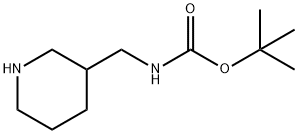
What is 3-N-Boc-Aminomethylpiperidine?
Chemical properties
White powder
The Uses of 3-N-Boc-Aminomethylpiperidine
Reagent for:
- Preparation of 9-substituted phenanthrene-based tylophorine analogs
- Enzymatic acylation
The Uses of 3-N-Boc-Aminomethylpiperidine
Reagent for:
Preparation of Tylophorine analogs
Enzymatic acylation
Properties of 3-N-Boc-Aminomethylpiperidine
| Melting point: | 60-70 °C(lit.) |
| Boiling point: | 321.8±15.0 °C(Predicted) |
| Density | 0.981 |
| storage temp. | 2-8°C |
| pka | 12.71±0.46(Predicted) |
| color | White |
| BRN | 7023643 |
| CAS DataBase Reference | 142643-29-6(CAS DataBase Reference) |
Safety information for 3-N-Boc-Aminomethylpiperidine
| Signal word | Danger |
| Pictogram(s) |
 Corrosion Corrosives GHS05 |
| GHS Hazard Statements |
H314:Skin corrosion/irritation |
| Precautionary Statement Codes |
P260:Do not breathe dust/fume/gas/mist/vapours/spray. P280:Wear protective gloves/protective clothing/eye protection/face protection. P363:Wash contaminated clothing before reuse. P303+P361+P353:IF ON SKIN (or hair): Remove/Take off Immediately all contaminated clothing. Rinse SKIN with water/shower. P305+P351+P338:IF IN EYES: Rinse cautiously with water for several minutes. Remove contact lenses, if present and easy to do. Continuerinsing. |
Computed Descriptors for 3-N-Boc-Aminomethylpiperidine
3-N-Boc-Aminomethylpiperidine manufacturer
ALS INDIA LIFE SCIENCES
1Y
Phone:+91-8977036379
Whatsapp: +91 8008166674
product: 142643-29-6 3-N-Boc-Aminomethylpiperidine 98%
New Products
(S)-3-Aminobutanenitrile hydrochloride 4-Methylphenylacetic acid N-Boc-D-alaninol N-BOC-D/L-ALANINOL Tert-butyl bis(2-chloroethyl)carbamate 3-Morpholino-1-(4-nitrophenyl)-5,6-dihydropyridin- 2(1H)-one Furan-2,5-Dicarboxylic Acid Tropic acid 1-Bromo-3,5-Di-Tert-Butylbenzene S-2-CHLORO PROPIONIC ACID ETHYL ISOCYANOACETATE 2-Bromo-1,3-Bis(Dimethylamino)Trimethinium Hexafluorophosphate 4-IODO BENZOIC ACID 3-NITRO-2-METHYL ANILINE 1-(2,4-DICHLOROPHENYL) ETHANAMINE (2-Hydroxyphenyl)acetonitrile 4-Bromopyrazole 2-(Cyanocyclohexyl)acetic acid 4-methoxy-3,5-dinitropyridine 1-(4-(aminomethyl)benzyl)urea hydrochloride 2-aminopropyl benzoate hydrochloride diethyl 2-(2-((tertbutoxycarbonyl)amino) ethyl)malonate tert-butyl 4- (ureidomethyl)benzylcarbamate Ethyl-2-chloro((4-methoxyphenyl)hydrazono)acetateRelated products of tetrahydrofuran
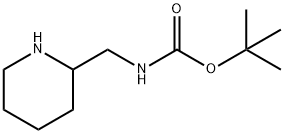
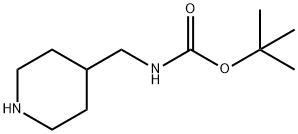
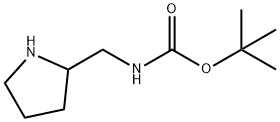


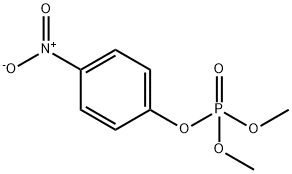
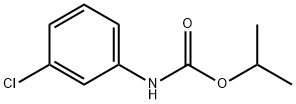

You may like
-
 142643-29-6 3-N-Boc-Aminomethylpiperidine 98%View Details
142643-29-6 3-N-Boc-Aminomethylpiperidine 98%View Details
142643-29-6 -
 tert-butyl N-(piperidin-3-ylmethyl)carbamate 97% CAS 142643-29-6View Details
tert-butyl N-(piperidin-3-ylmethyl)carbamate 97% CAS 142643-29-6View Details
142643-29-6 -
 3-(Boc-aminomethyl)piperidine CAS 142643-29-6View Details
3-(Boc-aminomethyl)piperidine CAS 142643-29-6View Details
142643-29-6 -
 1975-50-4 98%View Details
1975-50-4 98%View Details
1975-50-4 -
 2-HYDROXY BENZYL ALCOHOL 98%View Details
2-HYDROXY BENZYL ALCOHOL 98%View Details
90-01-7 -
 2-Chloro-1,3-Bis(Dimethylamino)Trimethinium Hexafluorophosphate 221615-75-4 98%View Details
2-Chloro-1,3-Bis(Dimethylamino)Trimethinium Hexafluorophosphate 221615-75-4 98%View Details
221615-75-4 -
 14714-50-2 (2-Hydroxyphenyl)acetonitrile 98+View Details
14714-50-2 (2-Hydroxyphenyl)acetonitrile 98+View Details
14714-50-2 -
 118753-70-1 98+View Details
118753-70-1 98+View Details
118753-70-1
Statement: All products displayed on this website are only used for non medical purposes such as industrial applications or scientific research, and cannot be used for clinical diagnosis or treatment of humans or animals. They are not medicinal or edible.